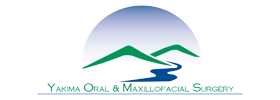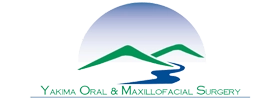Sinus Lift in Yakima WA

Planning for dental implants in your upper jaw? There’s a chance your journey might include a sinus lift in Yakima WA, and if that sounds intimidating, don’t worry. You’re not alone, and you’re definitely not the first person to hear about this for the first time.
As oral surgeons at Yakima Oral & Maxillofacial Surgery, we often see patients ready for implants but lacking one crucial ingredient: enough bone in the upper jaw to support them. That’s where a sinus lift (also known as a sinus augmentation) comes in.
It may sound like a niche or technical procedure, but it plays a powerful role in rebuilding confidence, bite strength, and long-term oral health. This isn’t just about adding bone—it’s about creating the right foundation for the smile you deserve.
What Is a Sinus Lift in Yakima WA?
A sinus lift is a surgical procedure that adds bone to the upper back jaw (typically near the molars and premolars) in the space just beneath the maxillary sinuses. The goal? To prepare the area for a strong, stable dental implant when there simply isn’t enough natural bone available.
The name “sinus lift” comes from the process of gently raising the sinus membrane to make room for bone graft material. Once the graft is placed, your body gradually regenerates and fuses the material into your existing jawbone—creating a more supportive structure for implants.
It’s a bit like reinforcing a house before building an addition: you wouldn’t start construction without making sure the foundation is solid. The same goes for your smile.
Why Would Someone Need a Sinus Lift?
It’s a common misconception that if you lose a tooth, replacing it is as simple as placing an implant. But in the upper jaw—especially near the back—things are a little more complicated.
Here’s why patients often need a sinus lift:
- Bone loss after tooth extraction: The jawbone starts to shrink in thickness and height once a tooth is gone. This happens faster than most people realize.
- The sinus cavity expands over time: With no teeth to support, the sinus membrane gradually drops into the space where bone used to be. This leaves little to no room for implants.
- Natural anatomy: Some people are simply born with sinuses that sit closer to their upper jaw than others.
- Chronic gum disease or infection: These conditions can accelerate bone loss and affect the structural integrity of the area.
Without enough bone, placing an implant could risk puncturing the sinus cavity—a complication we take every step to avoid.
How Do We Know If You Need A Sinus Lift in Yakima WA?
It starts with a consultation and some high-resolution digital imaging. Using a CBCT scan (Cone Beam CT), we’ll assess the thickness and height of your upper jaw bone and map out exactly how close your sinus cavities are to the implant site.
If there’s less than 4–5mm of bone between the sinus floor and your oral cavity, a sinus lift is usually necessary.
The good news? We’ll show you everything on-screen so you can fully understand what’s happening and why we’re recommending it. Transparency is a huge part of our care philosophy—no surprises, no confusion.
What Happens During a Sinus Lift Procedure?
Sinus lifts are typically performed in-office under local anesthesia or IV sedation, depending on your comfort level and medical history. The procedure usually takes about 60–90 minutes.
Here’s a general outline of what happens:
- Accessing the Bone: A small incision is made in the gum tissue where your upper back teeth used to be.
- Creating a Window: We create a small opening in the bone to gently push the sinus membrane upward—like raising a tent.
- Adding the Graft: Bone graft material (autogenous, donor-derived, or synthetic) is inserted into the newly created space.
- Sealing the Site: The tissue is sutured closed and healing begins immediately.
In some cases, if there's enough natural bone, we may place the dental implant at the same time. Other times, we wait several months for the graft to fully integrate with your existing bone.
Sinus Lift Recovery: What You Can Expect
You might expect this procedure to come with major discomfort—but most patients report only mild soreness, swelling, or sinus pressure. In fact, many are surprised by how manageable the healing process is.
We’ll provide everything you need for a smooth recovery, including:
- Antibiotics and pain management
- Specific instructions to avoid blowing your nose or sneezing forcefully
- A soft food diet for the first few days
- Regular follow-up appointments to monitor healing
Healing time typically ranges between 4 to 9 months, depending on how much bone was added and how your body responds.
How a Sinus Lift Supports Long-Term Implant Success
Let’s zoom out for a second. Why does all of this matter?
Because dental implants aren’t just placed—they’re anchored. And without enough healthy bone to hold them in place, they can loosen, shift, or even fail over time. A sinus lift doesn’t just make implant placement possible—it dramatically increases your odds of long-term success.
We view this procedure as a crucial investment in the future of your oral health. And when performed by a qualified oral surgeon, the results are predictable, safe, and long-lasting.
Common Questions About Sinus Lifts
Will I be able to breathe normally after the procedure?
Yes! The sinus membrane is carefully lifted—not removed or damaged. Your breathing won’t be affected during or after healing.Is the bone graft safe?
Absolutely. We use only trusted materials, whether it’s your own bone, a donor graft, or synthetic. Everything is biocompatible and carefully selected for your unique case.How long before I can get my implant?
Most patients wait about 4–6 months before receiving their implant post-graft. In certain situations, the implant and graft can be done simultaneously.Is a sinus lift permanent?
Yes. Once the graft has fully healed and fused with your natural bone, the added volume becomes part of your anatomy and will support the implant for decades to come.
We’re Here to Build the Foundation for a Stronger Smile
Sinus lifts may not be the most talked-about procedure, but in many cases, they’re the secret to unlocking implant success, especially in the upper jaw. Think of it as a quiet but powerful step forward, giving you the support your future smile needs to thrive.
If you’ve been told you don’t have enough bone for implants, or if you’re looking for a team that takes the time to get things right the first time, we’d love to help. At Yakima Oral & Maxillofacial Surgery, we will walk you through everything, answer your questions in plain English, and create a treatment plan tailored specifically to you.
Because the best smiles don’t just look good—they’re built on a strong foundation.
OFFICE HOURS
Monday
8:00am - 5:00pm
Tuesday
8:00am - 5:00pm
Wednesday
8:00am - 5:00pm
Thursday
8:00am - 5:00pm
Friday
8:00am - 1:00pm
Saturday & Sunday
Closed
Yakima Oral & Maxillofacial Surgery
4207 Tieton Dr
Yakima, WA 98908



